Due to their typical inorganic structure and organic residues, silicone structures are between inorganic and organic compounds. They are hybrids and show a unique range of properties not achieved by any other plastic.
At the beginning of the 20th century, English chemist Frederic Stanley Kipping succeeded in synthesizing the first organic silicon compounds, the basis of polyorganosiloxanes. With the search for alternatives to natural rubber, Kipping's work and other earlier work on the chemistry of silicon became interesting for industrial research.
In 1940, US chemist Eugene G. Rochow and German chemist Richard Müller almost simultaneously discovered a way to produce chloromethylsilanes, the most important precursors for the manufacture of silicones, on an industrial scale. The process is now known as the Müller-Rochow synthesis.
Silicone polymers are produced either with linear oligomers in a polycondensation process or with cyclic siloxanes in a ring-opening polymerization process.
Reinforcing agents and fillers are components of silicone compounds. Their type and quantity influence the mechanical and chemical behavior of the silicone elastomers produced by cross-linking. They can also be easily colored with suitable pigments and dyes.
Typical areas of application
Due to their special and widely adaptable property profile, silicone elastomers can be used advantageously for several applications. Their good electrical insulation properties and the constant physical characteristics over a wide temperature range make them an excellent choice for use in the electrical and electronics industry.
Thanks to their water-repellence, resistance to aging and weather, and absorption of stretching and oscillating movements, complex challenges in structural and civil engineering can be resolved. They have diverse use in automotive and aircraft engineering, the chemical industry, the plastics industry and several further areas.
Benefits
BUSS compounding systems offer the following specific benefits for processing silicone elastomers
Compounding requirements
from silicone elastomers
The BUSS Kneader has been used very successfully for several decades by leading market participants from the silicone industry. This, on the one hand, for polymer manufacturing via polycondensation or polymerization processes, in which the kneader is used as a high-volume, continuous reactor. The handling of very broad viscosity ranges, the precise addition of reactants through hollow-drilled kneading pins, the excellent temperature management as well as operation at a very low pressure are key for its use.
The actual compounding of silicone elastomers (HTV) and silicone sealing masses (RTV) is a further area of use. Reinforcing materials such as highly dispersed silica or classical fillers and further formulation components are compounded and undesired accompanying materials degassed. The moderate shear rates combined with the extremely high convolution numbers enable excellent mixing results and the handling of very highly viscous masses without local overheating.
The modular and therefore adjustable structure of all the systems and the well-established BUSS process expertise make the BUSS Kneader the first choice for manufacturing silicone polymers and compounding silicone masses in all classes.
